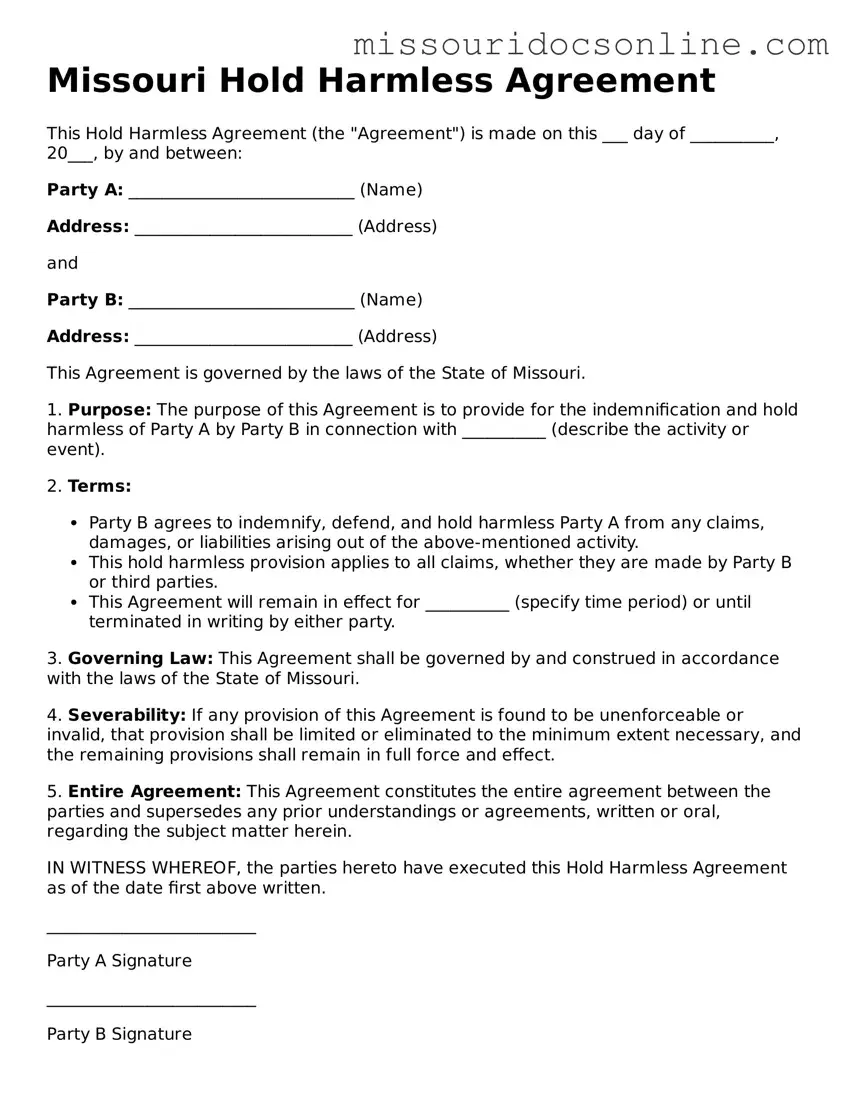Detailed Steps for Filling Out Missouri Hold Harmless Agreement
Completing the Missouri Hold Harmless Agreement form is a straightforward process. Follow these steps carefully to ensure that all necessary information is provided accurately. This will help in avoiding any potential issues in the future.
- Obtain the Missouri Hold Harmless Agreement form. You can find it online or request a copy from the relevant authority.
- Read the form thoroughly. Familiarize yourself with the sections and what information is required.
- Begin filling out the form with your personal information. This includes your name, address, and contact details.
- Provide details about the event or activity for which you are seeking the agreement. Be specific about dates and locations.
- Identify any other parties involved. Include their names and contact information as required.
- Review the section regarding the terms of the agreement. Make sure you understand the implications of the hold harmless clause.
- Sign and date the form. Ensure that you are signing in the appropriate section.
- If necessary, have the form notarized. Check if this step is required for your specific situation.
- Submit the completed form to the designated authority or keep it for your records as needed.
Once you have filled out the form, double-check all entries for accuracy. This will help prevent any delays or complications. Ensure that you keep a copy for your records after submission.
